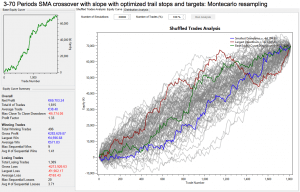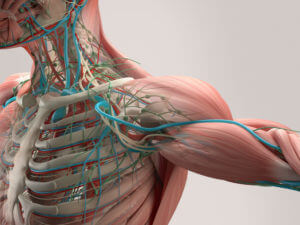Introduction
In this series, we will explore the basic aspects of charts and indicators; what they are, how to use them, what they represent, etc. All of this with a humorous attitude, but with the depth and seriousness to make it a good reference for people who are new in trading.
So, let’s begin:
Mom, What’s Technical Analysis (TA)?
Honey, that’s too easy for me! Fundamentals tell you a lot about love, but behavior tells if you’re wrong a lot sooner!
The term “technical analysis” (hereafter, “TA”) came from the idea that price movement is all that is needed to make a trading decision; that fundamental issues are incorporated into price history. The idea of price analysis is attributed to Charles Dow around 1900, the creator of the Dow theory. Kicking off from there, TA started to grow in importance to traders in the sense that price discounts all new information, including price trending, price confirmation, support, resistance, divergence, volume confirming price, etc.
To TA practitioners, the price represents a consensus of value. It’s the price at which somebody is willing to buy and another person ready to sell. That consensus depends on the different beliefs of the person on the market. The seller believes that price will go down in the future, while the buyer believes that it will go up. There’s a third category of traders: Traders that are waiting to see a price level to make a decision.
If an equivalent number of buyers and sellers collide, then price fluctuate around some consensus of value. When, due to some new information, that equilibrium is broken, price moves until a new equilibrium is found.
The historical record of prices is what draws chart patterns the investor or trader is willing to study, to determine the right way to enter a market.
Charts come in different flavors: line, bar, and candlestick chart are the most common; but there are other useful types, as well:
Fig 1. 5 min candlestick chart
Point: this chart type forgets the time. A new bar is created if a delta of price points is bettered. Very handy to get rid of the noise on tight price fluctuations.
Fig 2. 10-point candlestick chart
Ticks: It forgets time, as well. A new bar is created after a defined number of ticks.
Fig 3. 80-tick candlestick chart
Changes: Also forgetting time, a new bar is made after a predetermined number of price changes.
Fig 4. 80-changes candlestick chart (same segment as the tick chart)
Renko: This chart type ignores time and focuses on price changes that move further than a defined price delta.
Fig 5. 10.point Renko chart (same segment as the tick chart)
Point and figure: It consists of X’s and O’s columns. X’s represent rising prices, while O’s, falling prices.
Fig 6. Point and figure chart (same segment as the tick chart)
Kagi: It draws lines of price action in columns that represent price movements. It’s a different way to represent what point and figure charts does.
Fig 7. Kagi chart (same segment as the tick chart)
Three-line break: White and black blocks of varying heights. Using the closing price a white reversal block is added if price exceeds the previous 3-block high, and a black block reversal is added is price reaches a new 3-block low. A new line is drawn when a new high or low is made.
Fig 8. Three-line break chart (same segment as the tick chart)
Daddy, What’s a Bar?
Honey, a bar is a nice idea, but don’t take it too seriously…
A bar is a summary graph of what happened in a time-lapse. It consists of four price fields, and, usually, there’s also a volume field that’s plotted below the price plot.
The four fields are important moments during the time-lapse the bar represents: The open price, the highest and the lowest prices, and the last price (close), summarized in four letters: OHLC
Bars can be created in any time frame. From one-second bars to hourly, daily, weekly, monthly, or quarterly bars. A higher time frame bar is constructed using smaller time frame bar data. 1-minute bars from 30-second bars, or hourly bars from minute bars, for instance.
A single bar tells a lot of information. Price changes show the dominant beliefs and psychological frame of mind of the trader horde. Certain bar formations have special significance:
Reversal bar: The bar closes in the vicinity of the open, but the high or low is far away. This single bar pattern represents a couple of opposing bars at a smaller timeframe:
Fig 10: Bullish reversal pattern
Key Reversal bar: It’s a particular kind of reversal bar. A key reversal bullish bar consists of an opening below the previous close, and a close above the previous high.
It’s hardly seen in intraday charts. This combination is a strong confirmation that the downtrend has ended and an up-trend is beginning. Bearish reversals are similar, but opposite.
Inside bar: It’s a bar that’s entirely inside the previous bar. It’s a contraction of volatility. Several of them together tighten prices on a horizontal channel:

Outside bar: It’s a bar whose range exceeds that of the previous bar. It shows an increase in volatility.

Exhaustion bar: A bullish exhaustion bar opens with a gap down and moves up and closes near its top with a long body bar, with a high volume. The gap may remain unfilled, but when there’s a lot of strength it gets filled as well. The volume confirmation and the pattern are a sign of the end of a down-trend leg. The bearish exhaustion is the opposite, starting with a gap up and traveling south.

Mom, What’s a candlestick?
Sweetie, I’ve had a lot of fun using candlesticks! I’m sure you’ll enjoy them too when I explain to you how!
Candlesticks are a different way to depict the information present in a bar. It uses the Open, High, Low and Close of a bar to construct a figure that resembles a candlestick, that’s the explanation of its name. Candlesticks were widely used in Japan beginning a hundred years ago but were mostly ignored in western countries.
It was credited to Steve Nison its introduction to the western charts, and since then it has grown in popularity because it presented the same information as a bar chart, but it added visual information a bar couldn’t show.
A candlestick bar consists of a body part from open to close and two “shadows”, outside the body, up to the High and down to the Low price levels.
The traditional candle style was leaving the body of an ascending candle empty, and filled, if it belonged to a bearish candle. That was because charts were pencil-drawn on paper. With the advent of personal computers, charting software allows filling the body of a rising candle with a different color than on a falling candle.
The wicks, or shadows, are an important source of information when their length is similar or greater than the body. Several candlestick patterns contain large wicked candles, as we’ll see.
The Japanese say, according to Steve Nison, that the essence of price movement resides in the real body. We might say that the body contains the information part while the shadow is noise. Observing a particular candle, we get a quick visual indication of who’s in command: bulls if there’s a green body or bears if it’s red. Another use of the candle body is a way to measure market momentum. A large body reveals momentum, while a small, or bodyless, show indecision or a fading of the momentum.
This kind of information warns about the health of a trend but is usually hidden in simple bar charts.
Of course, we’ll observe all patterns of a bar graph. In fig 15 there are some of them: A reversal candle, just past the dissected candle, an inside bar, and an outside bar are seen later, as well.
But Japan brought us a new batch of candlestick-based patterns with exotic and suggestive names.
Candlestick formations:
Spinning tops: Very small bodies, red or green that show a very tight trading range. It’s a sign of indecision- It may be a pause before continuing the trend or sign that the trend loses steam.
Doji: It’s a kind of spinning top, but with an extremely thin body and long wicks. It’s one of the most important single body candlestick signals. The longer the shadow, the higher its importance. Dojis are present in major tops and bottoms.


Together with an oversold indicator (oversold if it’s a doji at a potential bottom) is a very good place for a high reward to risk ratio entry.
Marubozu: A long body candle with no shadows. Black marubozus are viewed as weak indicators. It usually appears as a final candle in a downtrend, followed by a long white candle, but If it appears after some small body candle it reveals the continuation of a trend.
White marubozus are extremely strong when appearing at the beginning of a trend change. If it appears after the trend has been for a while, it may show the last impulse of that trend and a is a warning sign of the end of that leg, or that a reversal is coming.
There are also two more varieties of marubozu: Closing Marubozu and opening marubozu.
A closing marubozu has a small shadow on the opening side and no shadow on the closing side. It shows momentum in the direction of the closing side.

Opening Marubozus show shadows on the close side, but not on the opening side. Although it’s a strong signal, it’s not as strong as the closing marubozu.
In the next article of this series, we’ll deal with major and minor candlestick patterns.
References: Technical Analysis from A to Z, Steven B. Achelis https://www.tradingsetupsreview.com/10-price-action-bar-patterns-must-know/ Japanese Candlestick Charting Techniques, Steve Nison Profitable Candlestick Trading, Stephen W. Bigalow All images were taken using Multicharts© v11 software.
©Forex.Academy
















